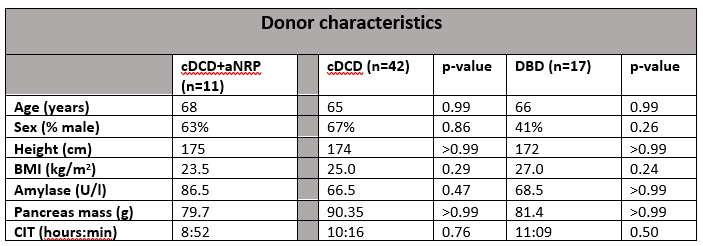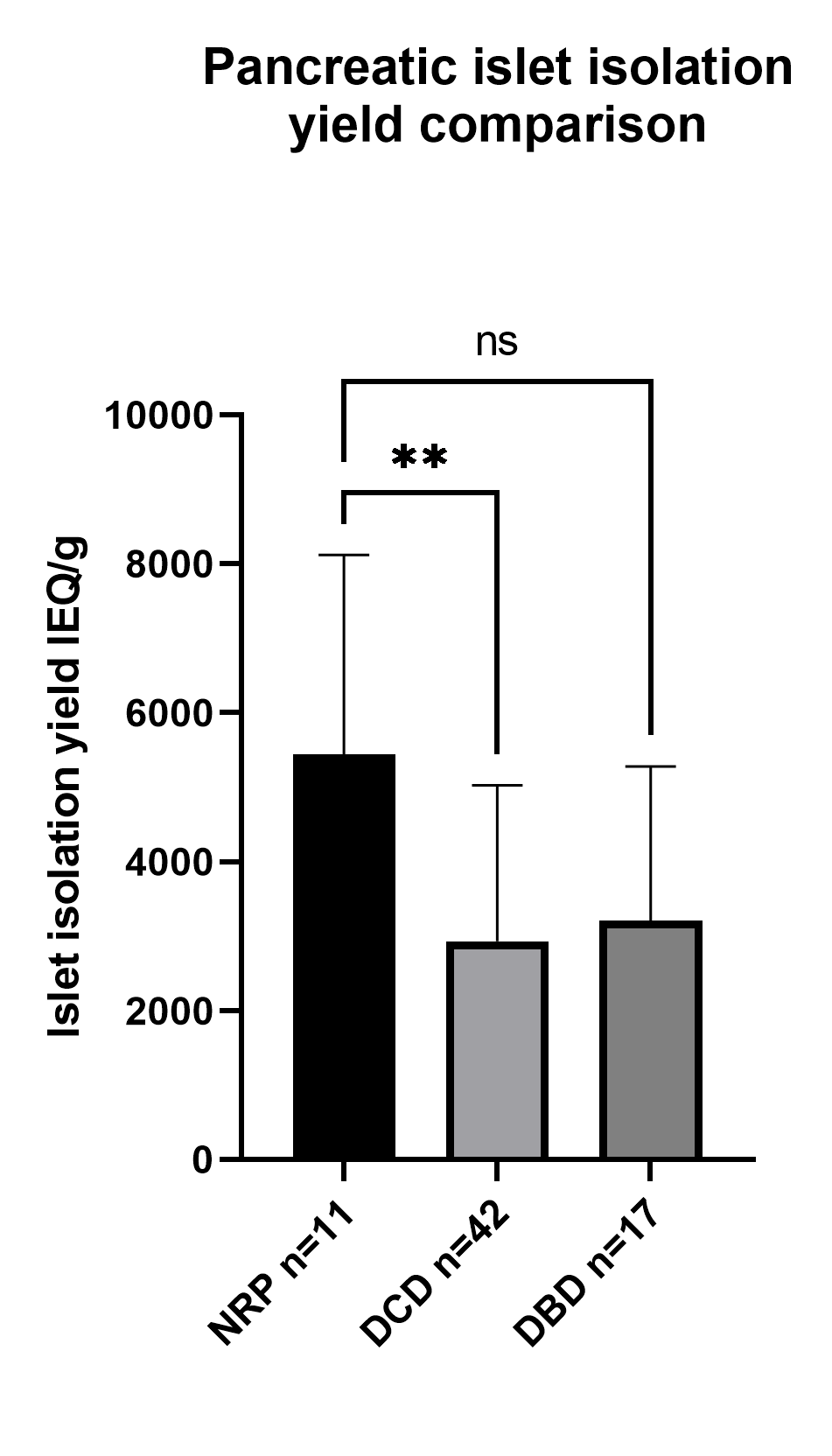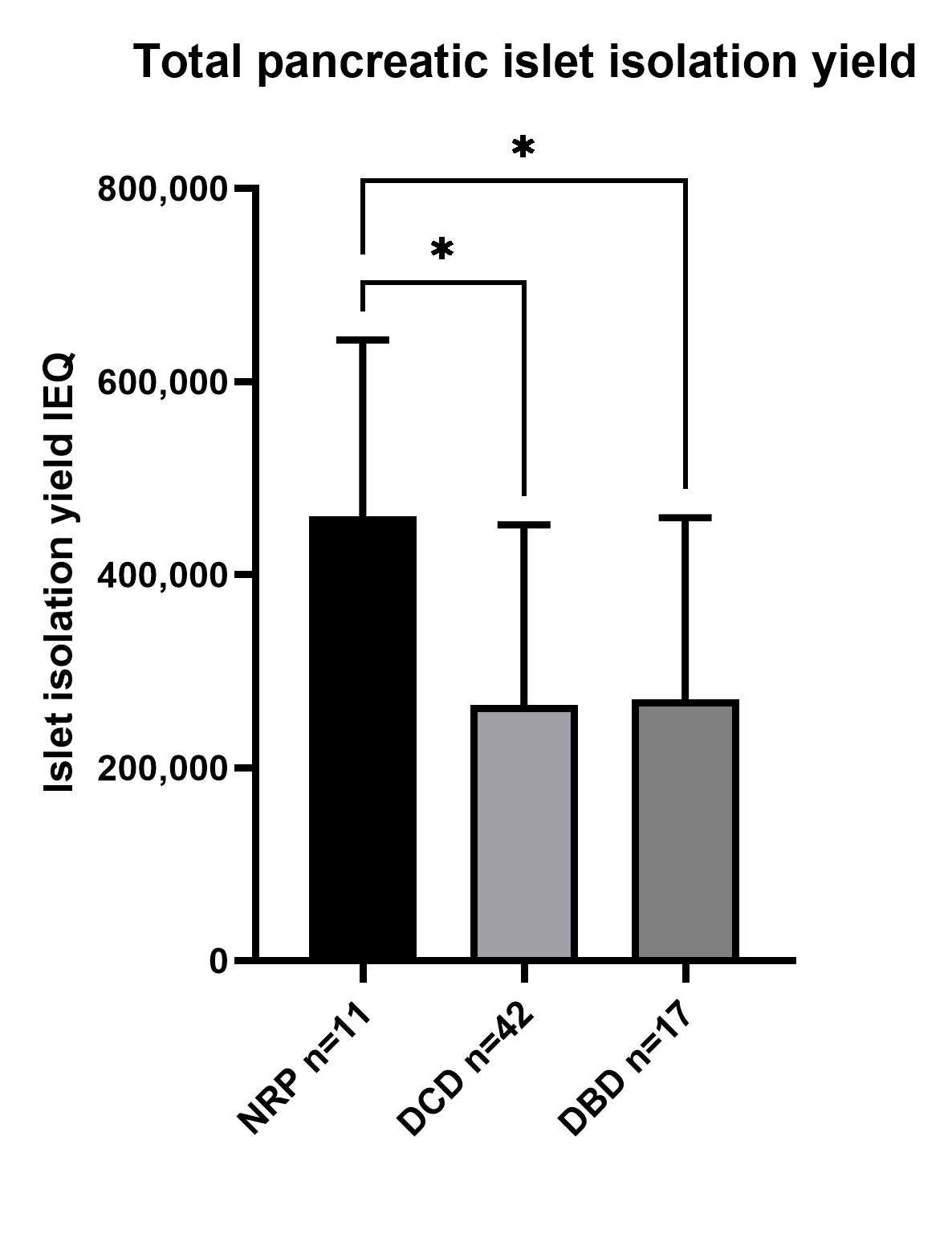Improved pancreatic islet isolation yield after abdominal normothermic regional perfusion of controlled donation after circulatory death donors
Rutger van Rooden1, Jason B Doppenberg1, Madeleine C van Dijk1, Femke HC De Goeij3, Fenna J van der Heijden3, Ian PJ Alwayn1, Eelco JP De Koning2, Jeroen De Jonge3, Marten A Engelse2, Volkert AL Huurman1.
1Transplant Center, Leiden University Medical Center, Leiden, Netherlands; 2Nephrology, Leiden University Medical Center, Leiden, Netherlands; 3Transplant Institute, Erasmus Medical Center, Rotterdam, Netherlands
Background: Shortage of suitable donor organs has led to increasing interest in abdominal Normothermic Regional Perfusion (aNRP). This is an in-situ normothermic oxygenated donor perfusion technique that can be used prior to procurement during controlled Donation after Circulatory Death (cDCD) procedures. It allows organ evaluation and potentially improves transplantation outcomes. There are few data on the effect of aNRP on pancreatic islet isolation outcome. Our aim is to evaluate the impact of aNRP on extended criteria pancreatic islet isolation outcomes.
Methods: A retrospective analysis was performed on pancreatic islet isolation outcomes from cDCD+aNRP (n=11), regular cDCD (n=42) and Donation after Brainstem Death (DBD, n=17) pancreata. These isolations were performed using a standardized procedure on comparable, matched for donor age (60-75), donor pancreata, see table 1. Islet isolation outcome was expressed in Islet Equivalent (IEQ) per gram pancreas weight. To assess pancreatic islet function, a dynamic Glucose Stimulated Insulin Secretion (dGSIS) test was performed. Islet survival was assessed by calculating the ratio between the change in IEQ of day 0 and day 1.
Results: Donor baseline characteristics were not different between groups. Isolations from cDCD+aNRP pancreata yielded more islets (4290±2017) compared to cDCD (2278±1453, p<0.01) or DBD (2410±1374, p=0.08) pancreata (see Figure 1). Which resulted in an increased total pancreatic islet yield for the cDCD+aNRP pancreata (471,739 ± 205,292) compared to cDCD (218,750 ± 131,793, p=0.01) or DBD (206,522 ± 121,549, p=0.04) (see Figure 2). The islet survival rate after culture was also higher for the cDCD+aNRP islets (96%±18.5%) compared to cDCD (75%±15.6%, p=0.60) and DBD (75%±23.0%, p=0.10) islets, although this difference was not significant. dGSIS tests in 7 cDCD+aNRP islet preparations showed a mean stimulation index of 4.91, indicating good functionality.
Conclusions: aNRP may lead to higher islet yield after an islet isolation procedure of a cDCD pancreas, the islets were viable and showed good functionality. aNRP could increase utilization of islet preparations that can be used for islet transplantation.


